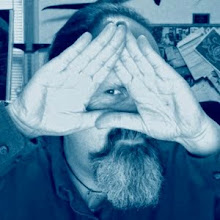*****
We will soon be starting work on our next project. We will be making
totem poles. This will be a group project, and the plan is that when they are finished, our totem poles will be installed outside somewhere on the school grounds (exact location to be determined).
As an introduction to this project, today you will be reading some information about totem poles, and looking at some pictures.
At the bottom of this post, you will find your assignment for today.Sometime in the next few days, you will be receiving more specific information about the actual project that you will be doing. (
Note: you will see in the pictures below that actual totem poles are very large, and are carved out of wood. We will not be carving; rather, we will be making a series of relief sculpture totems out of wood, which will then be mounted on poles.)
Here is a definition/explanation about totems and totem poles, found on the Internet:
A
totem is a representation of an animal, a plan, or a natural object that serves among certain tribal or traditional peoples as an emblem or as a guardian. Or, the animal, plant or natural object itself. A totem pole is a traditional form among artists of various Native peoples of the "Northwest Coast" -- British Columbia, Canada, an southern Alaska, USA. Carved from mature cedar trees, full size totem poles were originally an important part of the Potlatch ceremony, a feast with deep meaning to coastal First Nation. Totem poles were once carved and raised to represent a family-clan, its kinship system and stories. A totem pole served, in essence, as the emblem of a family or clan and often as a reminder of its ancestry. It might be raised to honor a deceased elder, or to show the number of names and rights a person had acquired over their lifetime, or to record an encounter with a supernatural being, or to symbolize the generosity of a person who sponsored a Potlatch ceremony. contemporary totem poles are carved for both Natives and non-Natives, and have come to represent the Northwest Pacific Coast Native tradition and pride.source: http://www.artlex.com/ArtLex/Tf.htmlOlder/historical totem poles (mid-1800s to early 1900s)




 Newer/contemporary totem poles
Newer/contemporary totem poles (mid-1900s to early 2000s)








 Student examples
Student examples (Ours will be somewhat similar to these-- relief sculptures mounted on poles. Note the limited color scheme. We will be making some decisions such as layout/design and color scheme as a class-- this is a collaborative project where
everyone will be working together.)
 Photo above is from the book From Ordinary to Extraordinary by Ken Vieth
Photo above is from the book From Ordinary to Extraordinary by Ken Vieth* * * * * * * * * * * * * * * * * * * * * * * * * * *
Your assignment for today:As we have done previously, you will be posting a "comment" below, in which you will respond to the following:
1.
Post two links to pictures of totem poles that you like, and for each picture, explain what it is that you like and why you like it. (3 points for each link/picture; 6 points total)
2. Off the top of your head, what do you think you might chose as
your personal totem? Animal, plant, other natural object, or something altogether different? Please explain your choice.
This choice does not need to be what you will use for your project-- it can be, or you can give it some more thought once we actually start working on the project. (4 points)
For your research, you can of course use Google etc, but
here is a really great website with a ton of links about totem poles.


























